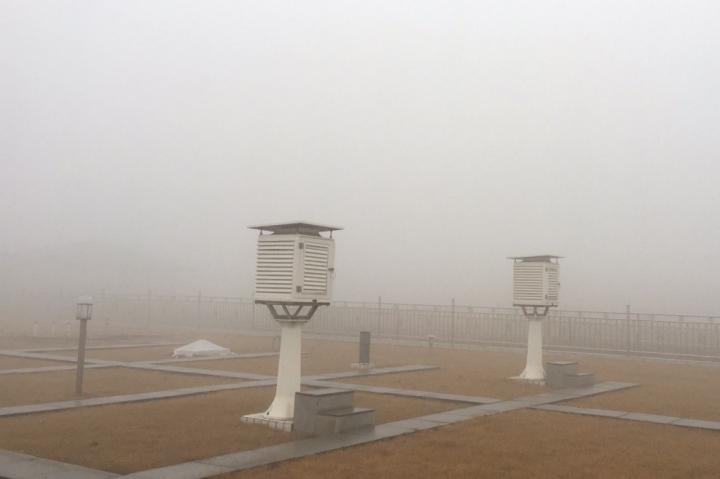
Credit: Xiaoxuan Zhao
Current air pollution studies largely rely upon aerosol mass spectrometers, most of which can only measure submicron aerosol (PM1) species–particulate matter with aerodynamic diameter less than 1 μm. In many studies, PM1 aerosol species are therefore used to validate those of PM2.5 (particulate matter with aerodynamic diameter less than 2.5 μm) in chemical transport models, and estimate particle acidity (pH) and aerosol water content which are key parameters in studying heterogeneous reactions. However, are there chemical differences between PM1 and PM2.5? Will the differences bring uncertainties into air pollution studies, especially in highly polluted environment, e.g., China and India?
Professor Yele Sun and his team with the Institute of Atmospheric Physics, Chinese Academy of Sciences tried to answer these questions by characterizing the chemical differences between PM1 and PM2.5 in a highly polluted environment in north China in winter using a newly developed PM2.5 Time-of-Flight Aerosol Chemical Speciation Monitor. They found that the changes in PM1/PM2.5 ratios as a function of relative humidity (RH) were largely different for primary and secondary aerosol species.
“If organics is the dominant component (> 50%) of particulate matter and RH is below 80%, the chemical species in PM1 would be highly correlated with those in PM2.5. PM1 can be representative of PM2.5” says Sun, the first and corresponding author of this study, “however, if sulfate, nitrate, and secondary organic aerosol that are formed from secondary formation are dominant components, there would be large chemical differences between PM1 and PM2.5 at RH > 60%. The major reason is that these secondary species have higher hygroscopicity and can uptake more water during higher RH periods”.
SUN also evaluated the impacts of chemical differences between PM1 and PM2.5 on the predictions of pH and aerosol water content with thermodynamic modeling. “The chemical differences of between PM1 and PM2.5 have negligible impacts on pH prediction, but has a large impact on prediction of aerosol water content by up to 50-70%.” says Sun.
“Our findings are important because current air pollution studies in highly polluted environment, particularly during severe haze events with high RH must consider the chemical differences between PM1 and PM2.5.” says Sun, “Validation of model simulations in chemical transport models also need to consider such differences.”
###
The study is published in Geophys. Res. Lett.(https:/
Media Contact
Ms. Zheng Lin
[email protected]
86-108-299-5053
Original Source
http://english.
Related Journal Article
http://dx.




